Contact us at the Consulting WP office nearest to you or submit a business inquiry online.
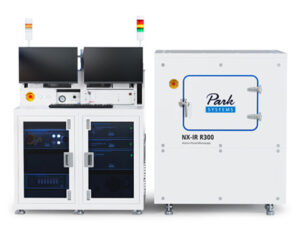 Park NX-IR R300 is a nanoscale infrared spectroscopy system for up to 300 mm
Park NX-IR R300 is a nanoscale infrared spectroscopy system for up to 300 mm
semiconductor wafers. It provides chemical property information as well as
mechanical and topographical data for semiconductor research, failure analysis
and defect characterization at an unprecedent high nano-resolution.
Park NX-IR R300 integrates the most advanced nanoscale IR spectroscopy with
atomic force microscopy. It combines the photo-induced force microscopy (PiFM)
module from Molecular Vista onto the industry leading Park NX20 300 mm
AFM platform.
Park NX-IR R300 is both a spectroscopy and a microscopy system.
The spectroscopy part of Park NX-IR R300 provides chemical identification
under 10 nm spatial resolution. It uses a non-contact technique offering
damage-free spectroscopy scanning and the best in industry spatial resolution.
The microscopy part of Park NX-IR R300 provides 3D topography with
sub-angstrom height accuracy and material imaging in nanometer lateral resolution.
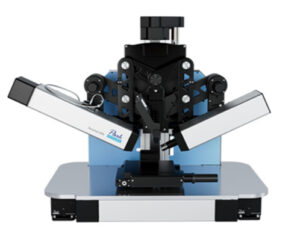 Imaging Ellipsometer
Imaging Ellipsometer
The EP4, our latest generation of imaging ellipsometers, combines ellipsometry and microscopy. This enables the characterization of thickness and refractive index with the sensitivity of ellipsometry on micro-structures as small as 1 µm. The microscopic part enables a simultaneous measurement of all structures inside the field of view of the optical system. Conventional ellipsometers have to focus on the measurement spot, while not achieving comparable lateral resolution, and measure spot by spot.
The microscopic part of the EP4 enables an ellipsometric-enhanced contrast for microscopic images obtained. Minor changes in refractive index or thickness can be seen in the live view of the camera. This allows to identify regions of interest for the ellipsometric measurements to obtain values for thickness (0.1 nm – 10 µm) and refractive index. 3D maps of the lateral variation of thickness and/or refractive index can be recorded within a single measurement.
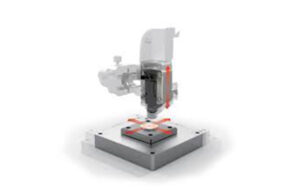 Applications:
Applications:
Park NX7 has all the state-of-the-art technology you have come to expect from Park Systems, at a price your lab can afford. Designed with the same attention to detail as our more advanced models, NX7 allows you to do your research on time and within budget.
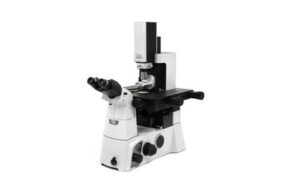 Applications:
Applications:
The study of the electrochemistry of batteries, fuel cells, sensors, and corrosion is a rapidly growing field, yet many AFMs do not directly address their unique needs. Park NX12 offers the functionality and flexibility chemistry researchers require by giving them one simple, easy-to-use platform with all the tools they need, including:
Versatile and easy-to-use electrochemistry cells
Environmental control options for inert gas and humidity
Inverted optical microscope (IOM)
Bi-potentiostat compatibility
 Applications:
Applications:
Park Systems has introduced the NX10, the world’s most accurate AFM, as the flagship AFM of its new product line. Now available worldwide, the NX10 brings unparalleled imaging accuracy, scan speeds, and tip life to the next generation of researchers, all at an affordable price. The NX platform builds on Park Systems’ 28 years of technology leadership in AFM data accuracy, and its reputation as the leading nanotechnology solutions partner to research and industry.
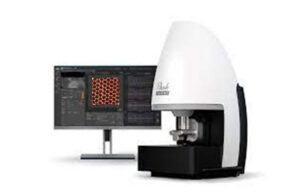 Applications:
Applications:
Effortlessly, get the sharpest, clearest, highest resolution images and measurements one sample after another on various applications. Boost your progress and scientific discoveries through unprecedented speed and accuracy – as the Park
FX40 autonomously images and acquires data powered by its artificial intelligence, robotics and machine learning capability. The Additional axis cameras automatically align with laser beams and photodetectors. The early warning systems and fail-safes at every step of the way allow you to focus on your research and not the tool.
Product Videos
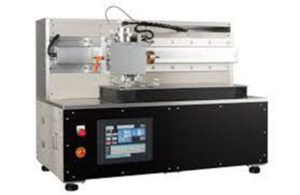 Applications:
Applications:
The KK01 Scratch Tester uses a rigid pin to scratch such targets as film, plastic, automotive interior and exterior material, and coating material to evaluate the target’s scratch resistance (scratch characteristics).
 Applications:
Applications:
The KK02/03 Scratch Tester uses a rigid pin to scratch such targets as film, plastic, automotive interior and exterior material, and coating material to evaluate the target’s scratch resistance (scratch characteristics).
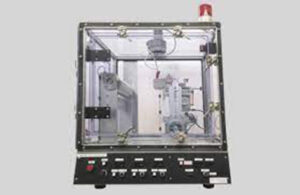 Applications:
Applications:
The NEU Nanofiber Electrospinning Unit uses electrospinning techniques to safely and easily produce nanofibers with diameters of 50 to 800 nm. This device is widely used in the automotive industry for research and development of filters and fuel cells.
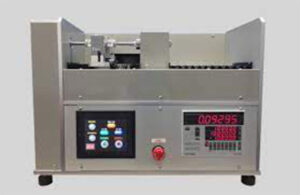 Applications:
Applications:
The SK2000 Hair Diameter Measurement Unit provides an accurate understanding of the basic characteristics of a hair’s outer diameter, which can then be used as feedback for other characterization.
This product was jointly developed by Shiseido Company and Kato Tech.
*Operation is done via touch panel.
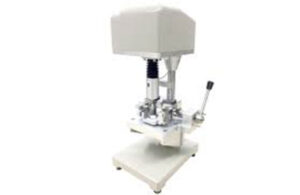 Applications:
Applications:
This testing machine measures the piercing strength required for a needle to penetrate a sample. It is to measure rupture strength by applying force at a right angle, used for testing physical properties of battery separators.
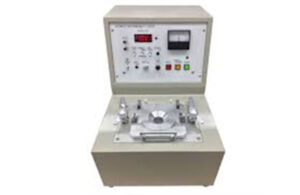 Applications:
Applications:
The KES-F8 Air Permeability Tester is designed to quickly and accurately measure the breathability and permeability of a wide range of samples, from those with high permeability, such as stockings, to those with low permeability, such as synthetic leather.
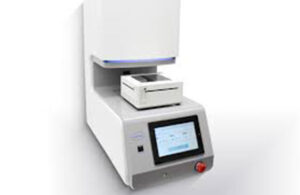 Applications:
Applications:
The sensation of coldness or warmth when skin touches an object is referred to as the “coldness and warmth feeling.” The feeling of coldness or warmth will vary depending on the amount of heat transferred from the skin to the object. This device measures that feeling automatically by evaluating the “qmax” value (peak heat flux).
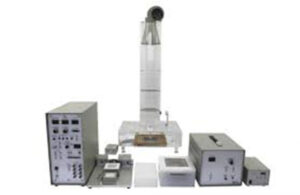 Applications:
Applications:
The sensation of coldness or warmth when skin touches a fabric is referred to as the “coldness and warmth feeling.” The feeling of coldness or warmth will vary depending on the amount of heat transferred from the skin to the fabric. This device measures that feeling by evaluating the “qmax” value (peak heat flux).
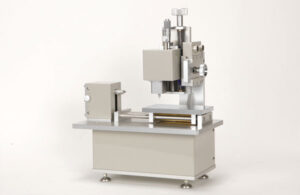 Applications:
Applications:
The KES-SESRU Roughness/Friction Tester analyzes hand movements-particularly, strokes-performed by artisans and professionals when judging a fabric’s texture. The device performs this movement mechanically, making it possible to obtain objective numerical data while offering more enhanced versatility over the KES-FB4-A Surface Tester.
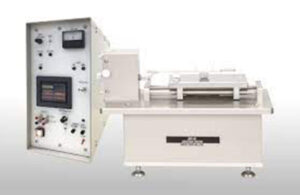 Applications:
Applications:
The KES-SE Friction Tester analyzes hand movements-particularly, strokes-performed by artisans and professionals when judging a fabric’s texture. The device performs this movement mechanically, making it possible to obtain objective numerical data while offering more enhanced versatility over the KES-FB4-A Surface Tester.
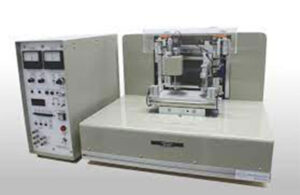 Applications:
Applications:
The KES-FB4-A Surface Tester analyzes finger movements-particularly, strokes-performed by artisans and professionals when judging a fabric’s texture. This device performs this movement mechanically, making it possible to obtain objective numerical data.
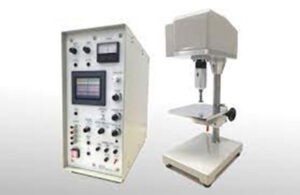 Applications:
Applications:
The KES-G5 Compression Tester analyzes hand movements-particularly, movements by finger-performed by artisans and professionals when judging a fabric’s texture. The device performs this movement mechanically, making it possible to obtain objective numerical data while offering more enhanced versatility over the KES-FB3-A Compression Tester.
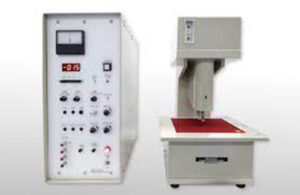 Applications:
Applications:
The KES-FB3-A Compression Tester analyzes hand movements-particularly, pushing with a finger-performed by artisans and professionals when judging a fabric’s texture. This device performs this movement mechanically, making it possible to obtain objective numerical data.
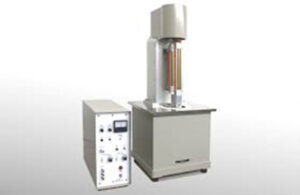 Applications:
Applications:
The KES-FB2-L Large Bending Tester accurately and quickly measures factors related to curvatures in small bending moments (bending hardness and recoverability). Adding to the small area available with conventional models, the KES-FB2-L enables measurements that were not previously possible, such as large bending moments and bending rigidity of thick sheet material and composites (products) made from multiple materials. The device also offers excellent data reproducibility in addition to easy measurement.
The KES-FB2-L has been put to use in a variety of industries, including the automotive industry.
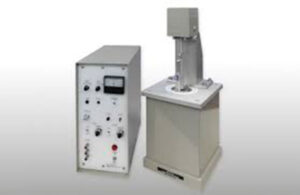 Applications:
Applications:
The KES-FB2-SH Single Fiber Bending Tester makes it possible to easily measure and quantify softness, elasticity, and diffusion differences in a single strand of yarn or hair. Elasticity and diffusion differences can be quantified by measuring the hardness and recoverability when bending the target. With the KES-FB2-SH, measurements can be performed easily for a single strand, eliminating effort spent creating multiple samples.

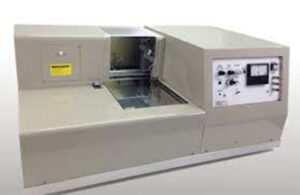 Applications:
Applications:
The KES-FB2-A Pure Bending Tester analyzes hand movements-referred to as “bending”-performed by artisans and professionals when judging a fabric’s texture. This device performs these movements mechanically, making it possible to obtain objective numerical data.
Models Available:
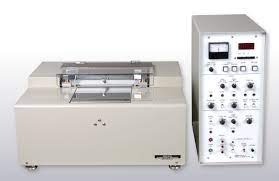 Applications:
Applications:
The KES-FB1-A Tensile and Shear Tester analyzes hand movements-referred to as “tensile” and “shear”-performed by artisans and professionals when judging a fabric’s texture. This device performs these movements mechanically, making it possible to obtain objective numerical data.
Applications:
Neutron Radiation Survey Meter is a portable intelligent instrument specially designed for monitoring the equivalent dose rate around the neutron. The product was verified by National Institute of Metrology, China.
The instrument consists of two parts: a detector and a host. The detector converts the neutron rays into an identifiable signal and sends it to the host. After being processed by host computer, it is converted to the actual dose equivalent rate and transmitted to the human-computer interface. In this way, dose equivalent rate measurement can be achieved.
Applications:
The traditional ball feeding method is done manually,which not only has high labor intensity and high risk factor,but also has high cost and low efficiency,and also it has shortcomings such as inaccurate ball feeding and untimely ball feeding.The application of intelligent ball feeding machine completely solves these problems.The intelligent ball feeding system developed by DFMC adopts advanced control concepts, combines rich field experience, and continuously iterates technology on the basis of traditional ball feeding machines,optimizes the design of ball taking mechanism and transmission mode, and innovatively makes solutions for the common phenomenon of ball jamming and ball blocking in ball feeding machines, and realizes the optimal strategy of ball feeding methods.
The intelligent ball feeding system has a high degree of intelligence,which can automatically run according to the setting,and realize timing and quantitative continuous ball feeding according to the mill operation rate and operation information;It can switch the ball feeding mode,automatically calculate the number of ball feeding and it can be compatible with the existing DCS system of the mineral processing plant,so that the ball mill ball feeding can achieve scientificity,regularity and controllability and greatly improve the grinding efficiency.
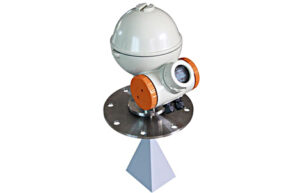 Applications:
Applications:
It is dedicated to real-time measurement of the material level of the solid silo. It can be applied to the crushing, grinding, screening, buffer silo etc. in the mining, sand and gravel aggregate industries. It can cooperate with the automation system to stabilize the production process, save manpower and protect the site. The normal operation of the automated process provides reliable basic data for evaluating the remaining amount of materials in the warehouse.
DF-6201 solid radar level meter adopts four-wire X-band FMCW system and it is perfectly integrated with military technology. It has high comprehensive detection performance indicators and the measurement is not affected by dust, feeding noise, airflow and temperature changes. On the basis of ensuring stable measurement under severe working conditions, the application of large beam angle detection technology is realized, which pushes the solid level measurement from point detection to a new field of surface detection and improves the representativeness of the detection data. The instrument has five function modes, which can output representative level information such as average, higher and lower according to different production stages of the user. The product can show its excellent general measurement ability when used in general solid level measurement conditions. It can also provide users with its unique measurement analysis under extreme dust and silo conditions with a variety of interference factors that affect the measurement solution. Compared with the radar level meter that adopts the pulse measurement principle, even in the working conditions of extreme dust and rapid changes in material level, there will be no “wave loss” or “locking wave” phenomenon, the detection is extremely stable and reliable.
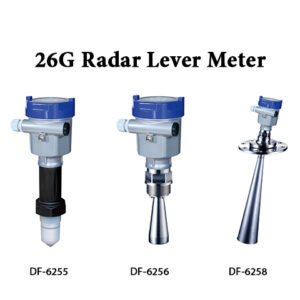 Applications:
Applications:
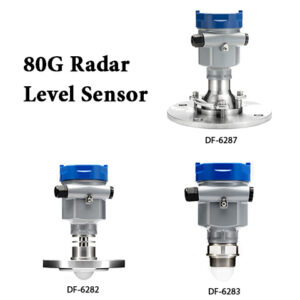 Applications:
Applications:
Being compared with lower frequency, 80G radar has higher frequency, shorter wavelength, smaller beam angle and more concentrated energy. Together with the application of FMCW technology, it has the following features.
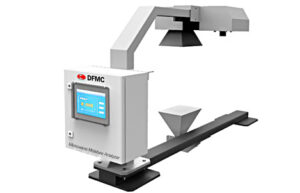 Applications:
Applications:
DF-MMA series microwave moisture analyzer adopts the principle of microwave transmission to conduct real-time online moisture detection of materials. The instrument has developed complete series products with good adaptability. It has mature moisture detection solutions for coal, sintering, agriculture, building materials etc. and selected and designed for different field application scenarios and material to meet different requirements.
DF-MMA series microwave moisture analyzer is a non-contact material moisture on-line measuring instrument. It uses microwave transmission method to realize on-line moisture measurement of different types of detection targets such as bulk materials and luggage materials on the belt. It adopts microwave moisture measurement technology. When the microwave passes through the moisture-containing material, the propagation speed of the microwave slows down and the intensity decreases, which causes the power attenuation and phase shift of the microwave. Then the regression algorithm is used to establish the correlation with the moisture content of the material to calculate material moisture value. The core unit of the instrument adopts military-grade components with high measurement accuracy and stability and strong on-site adaptability. It can be customized for different on-site working conditions.
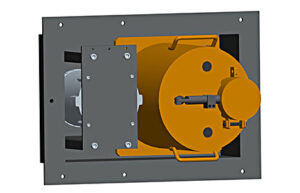 Applications:
Applications:
Neutron Moisture Analyzer (DF-NMA) is used to continuously detect the moisture content of coke within silos or on the conveyor belt in steel plants. Its raid analysis enables closed loop automatic control of the production process.
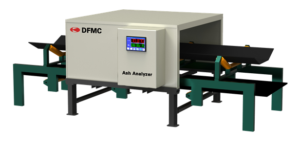 Applications:
Applications:
Natural Gamma Ash Analyzer can be used for real-time on-line detection of ash in coal. The instrument detects the ash by detecting the radiation emitted by the natural radioactive substances contained in the coal. Therefore, the instrument itself does not contain any radioactive substances, does not emit radioactive rays, has no radiation, safe and reliable. It can be used for the detection of the coal into the furnace of thermal power plant, raw coal of coal mining plant, coal into the plant of coal washing plant, etc.
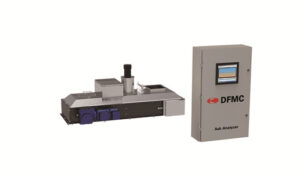 Application
Application
Using X-ray absorption principle and X-ray fluorescence technology, using X-ray tube as excitation source, through measuring the scattering intensity and characteristic X-ray intensity of X-ray interacting with coal seam, the ash content in coal can be quickly calculated by special algorithm.
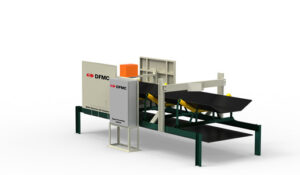 Applications:
Applications:
Multi-Detector Ash Analyzer is composed of main unit, signal processing cabinet and scraping device. The main unit is installed on the belt rack to fix the emitter and detector.
Dual energy γ is applied for the analyzer. The basic principle of transmission measurement of ash is different from the traditional single point measurement. In order to increase the representativeness of the results, the multi-point measurement method is adopted, that is, the coal at different positions on the cross section of coal flow is measured at the same time.
At the same time, the instantaneous flow information of coal can be calculated by means of multi-point measurement, and the average ash content in any period of time can be obtained by combining with the instantaneous ash content of coal.
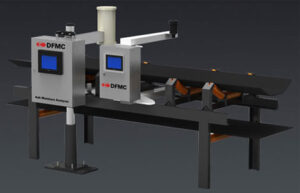 Applications:
Applications:
Online Ash and Moisture Analyzer (AMA-D) independently developed by DFMC is directly installed on the coal conveyor belt and directly performs on-line detection of the whole coal flow, avoiding the problem of poor sampling representativeness. It can be widely used in coal mines, thermal power plants, coal washery, coal blending plants and coal terminals for on-line inspection, and can also be used for automatic adjustment and control of the production process in coal preparation and coal blending processes.
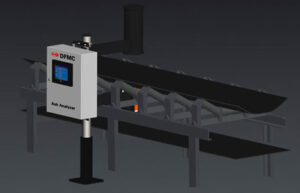 Applications:
Applications:
Online Ash Analyzer (AA-DUET) can be used to measure coal ash on the entire conveyor belt quickly and accurately. The instrument has the strength of good stability, high measurement accuracy, and convenient installation and maintenance. It does not require cumbersome processes such as sampling, sample preparation, and laboratory tests. Also, it does not need any additional investments such as building tower etc. for its installation. It can be installed on the belt rack directly without any modification to the belt rack.
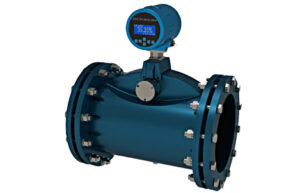 Applications:
Applications:
Ultrasonic density gauge (DGU-II) is used for online detection of concentration and density of solids-liquid mixed suspension, which is indispensable for the process of self-adjustment of process parameters, real time quality monitoring or real time production statistics in close-loop control of production, it can widely used in the detection of the concentration or density of suspension in the medium system of the coal preparation industry and the coal slime water system.
DGU-II is based on the principle of ultrasonic transmission attenuation. It detects the concentration and the density of continuous solid-liquid two-phase flow.
DGU-II uses non-nuclear detection ultrasonic as the detection signal, it integrates multiple technologies such as ultrasonic composite detection technology, digital multi-frequency signal generation and detection, envelope energy algorithm and multi-level software filtering algorithm to eliminate solid particle size influence.
DGU-II has the advantages of good adaptability, high precision, large measuring range, simple installation, calibration, sturdiness and durability, etc., all those features ensure DGU-II can operate stably under severe working conditions.
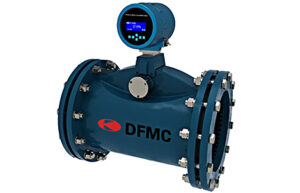 Applications:
Applications:
Ultrasonic density gauge (DGU) is dedicated to the detection of slurry concentration in the mineral processing industry. The meter is directly installed on the slurry conveying pipe section of the flotation feeding, concentrate, tailings and other process links in the beneficiation to achieve online real-time detection. The measurement result is accurate and reliable.
Ultrasonic density gauge (DGU) is a necessary instrument to detect density parameter to realize self-adjustment, real-time quality monitoring or real-time statistics of production in closed-loop control of production.
Applications:
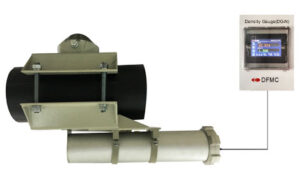
Density gauge (DGN) is used for online detection of the density (concentration) of various liquids in the industrial production process and provides real-time data for guiding production. It is also possible to indirectly determine the content of solids in the material liquid through the density value of the measured material liquid.
Density gauge (DGN) can be applied to the concentration detection of raw ore, concentrate and tailings in mine beneficiation; detection of the density of flotation liquid in coal preparation plants; online detection of the concentration of various solutions and material liquids in the petrochemical process, providing real-time data for guiding production.
 Applications:
Applications:
Used for on-line detection of material density and concentration in industrial production process, suitable for metallurgy, mining, papermaking, chemical, food and other industries.
Applications:
By continuously collecting images of the ore in operation, provides the particle size distribution characteristics of the ore in real time analysis. It is often used to measure the particle size distribution of ore on the conveyor belt and other occasions where the size, shape and color of bulk materials need to be detected (such as super large material detection, material color detection, etc.
Particle Size Image Camera completes real-time collection, display and analysis of ore images. Using random color circles show the effect of ore segmentation. Using graphs display the particle size distribution of a single image. Using trend lines display continuous image particle size changes. Besides, output analysis and processing results for reference by the control system, saving samples images and analysis results are available for offline analysis.
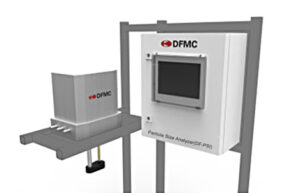 Applications:
Applications:
DF-PSI Particle Size Analyzer is an intelligent, fully automatic industrial online real-time particle size detection instrument, which can be directly installed on the slurry conveying pipe in the beneficiation process. It can directly detect the particle diameter and perform statistical analysis on the detection results which is accurate and real-time. The instrument is easy to install and maintain. Meanwhile with the on-site automation system, it can optimize the grinding circuit, improve the quality of the beneficiation products, increase the recovery rate and reduce energy consumption.
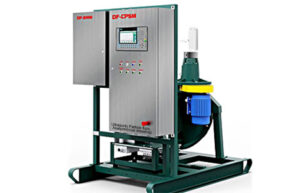 Applications:
Applications:
The Coal Ultrasonic Particle Size Analyzer is a patented product independently developed by DFMC which provides accurate and real-time measurement of particle size of slime water through the process of raw slime separation and flotation feeding. The particle size analysis of slime water effectively solves the problems of traditional process data lag. Based on the real-time detection information and the control system, the analyzer can optimize and adjust the process in advance to make the flotation system more stable and effectively saving the consumption of flotation reagents, thereby improving production efficiency, stabilizing product quality, increasing product recovery rate and reducing energy Consumption to achieve the comprehensive goal of “reducing manpower, improving efficiency and security”.
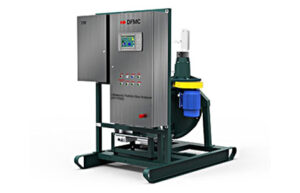 Applications:
Applications:
Ultrasonic Particle Size Analyzer is dedicated to the detection of slurry particle size in the beneficiation industry. It is used to measure the overflow slurry of the cyclone or classifier in the beneficiation process which is suitable for measuring the particle size distribution from 25 microns to 295 microns meeting the P80 standard. The real-time analysis result is accurate. Cooperating with the on-site automation system, using the particle size measurement and analysis information, the grinding circuit is to be optimized, thereby improving the quality of the beneficiation products, increasing the recovery rate and reducing energy consumption. The instrument has strong adaptability which is widely used in solid-liquid two-phase suspension slurry such as iron, molybdenum, copper, gold, lead-zinc slurry etc.
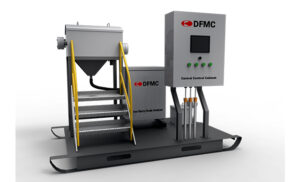 Applications:
Applications:
Iron slurry grade analyzer (DF-IGA) is an instrument used for online real time grade analysis of Fe within slurry. It adopts dual-energy gamma-ray absorption method and gets iron grade through spectrum unfolding analysis on complex transmission spectrum generated during two kinds of gamma rays with different energies transmit the slurry.
DF-IGA is a robust instrument for grade detection. Small space usage enables DF-IGA can be easily installed. Good adaptability allows long-term stable and reliable operation as well as small maintenance cost.
DF-IGA can realize continuous and stable online iron grade detection which is suitable for Fe content detection during mineral processing. It can participate in and even guide the automatic control of production process
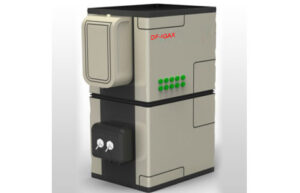 Applications:
Applications:
XRF iron grade analyzer (DF-IGAX) adopts non-contact measurement, selects advanced high-energy X-ray tube to excite the iron element in the pulp to produce a characteristic energy spectrum and analyzes the iron element content in the measured pulp by the method of dispersion.
DF-IGAX uses an advanced high-energy x-ray tube to excite the characteristic energy spectrum generated by the iron element in the slurry and it uses the energy dispersion method to analyze the iron element content in the measured substance.
DF-IGAX is consists of analysis main body, upper computer, sampling system, etc. The main body of the analyzer includes x-ray tube, detector, high voltage generator, PLC control unit, electric control unit cabinet, x-ray tube constant temperature system, etc. The host includes signal processing host, industrial tablet computer, board card, application program, alarm system, etc. The sampling system includes gravity flow sampler (pressure sampler), automatic sampler cleaning, etc.
Applications:
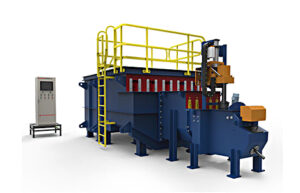
X-Ray fluorescent elemental analyzer – single channel (EA-XRF) is a single-channel, online analysis instrument for grade detection.
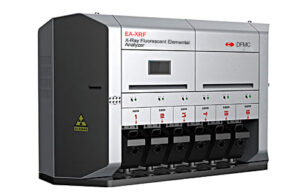 Applications:
Applications:
X-Ray fluorescence analysis technology and dispersion analysis method are used to generate complex X-Ray mixed energy spectrum by exciting various elements in the material. The energy spectrum analysis technology is used to find the element type and content in the measured material and the instrument eliminates the need for complexity. The cumbersome sample processing process directly analyzes the slurry and quickly gives the analysis results which can participate in and guide the automatic control of the production process.
Applications:
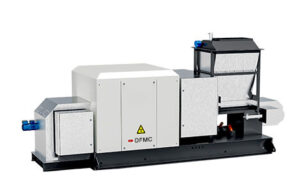
Byline elemental analyzer (EA-COALBL) is a type of byline detection and analysis equipment independently developed by DFMC. It adopts Neutron Activation Prompt Gamma Analysis (PGNAA) technology, which is mainly used for incoming coal detection. It can provide real-time analysis data of sulfur, ash, moisture, GCV and other indicators, which plays an important role in improving the quality control level of users.
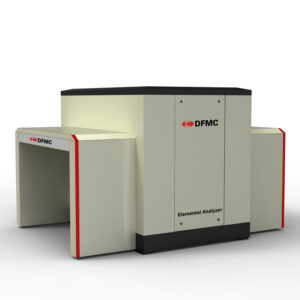 Applications:
Applications:
EA-MINERAL cross-belt elemental analyzer is an online testing instrument. It is used in the production process where the measurement of the mineral composition is needed. It is modular designed and can be easily installed around the belt without the need to cut the belt. During operation, the belt runs through EA-MINERAL and all material flowing through it is tested. The whole process is carried out without sampling, without touching the material, without affecting the belt operation. It is rapid analysis of the elemental composition of the mineral with results given every minute. According to the real-time information of the EA-MINERAL, the production process can be effectively controlled and improved, the production cost can be reduced and the metal recovery rate can be increased.
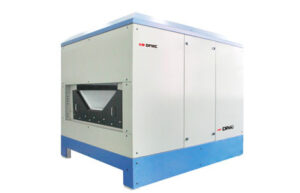 Applications:
Applications:
Cross-belt elemental analyzer (EA-SINTER) gives real-time non-contact detection of the element content in sintering raw materials, mixtures and sintered ore. At the same time, it analyzes the content of calcium, silicon, iron, sulfur and other elements in the material,it calculates quality control parameters to optimize the entire sintering and ore blending production process and improve efficiency.
 Applications:
Applications:
Cross-belt elemental analyzer (EA-COAL) is the major achievement of the national neutron activation scientific instrument development project. It is a rapid gamma neutron activation analyzer (PGNAA). The analyzer provides detection results every minute and analyzes the main coal quality parameters and industrial indicators in real time, effectively supervising and controlling coal quality, improving production process, reducing production costs, and improving product quality.
EA-COAL has great significance for online detection of coal mining, coal washing, coal blending, coal-as-fired and other production process control.
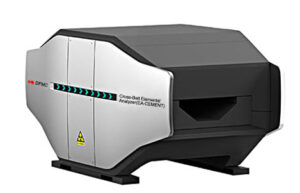 Applications:
Applications:
Cross-belt elemental analyzer (EA-CEMENT) is a type of online detection and analysis equipment independently developed by DFMC. It adopts neutron activation prompt gamma analysis (PGNAA) technology for limestone ore proportioning, raw mixing, clinker testing, cement blending. The content of calcium, silicon, aluminum, iron, magnesium, potassium, sodium, sulfur and chlorine can be detected in real time, which has played an important role in improving the level of quality control of cement enterprises.
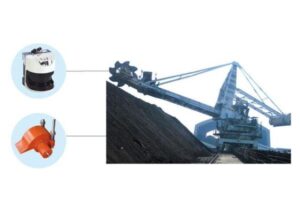
Application:
Suitable for all sizes of the coal pile, large earthwork and stonework, filling volume measurement, widely used in the field of electric power, coal, cement, paper, metallurgical, petrochemical, environmental protection, geological prospecting, transportation, etc.
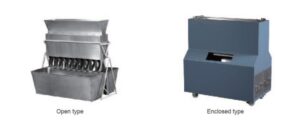
Application
The SDRD riffle splitter can be used to sample division designed under related standard
Other Products
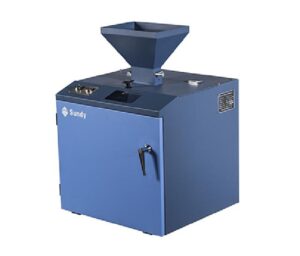
Application:
SDMD16 Automatic Divider is used for sample division and is widely used in coal mine, iron ore mine, agglomerate mine pallet mine, smelter coke industry, engineering material industry,
To divide evenly and precisely.
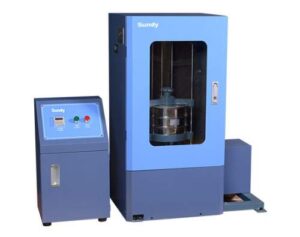
Application:
SDNS Standard Sieve Shaker is designed to sieve particulate matter in the field of power industry, coal, fuel & chemical processing, metallurgical industry, food industry, and geological
Easy locking, safe and quiet.
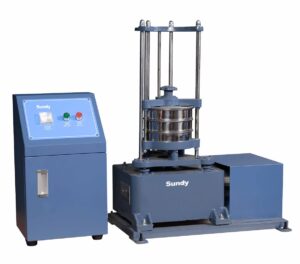
Application:
SDNS Standard Sieve Shaker is designed to sieve particulate matter in the field of power industry, coal, fuel & chemical processing, metallurgical industry, food industry, and geological industry, etc.
Easy locking, safe and quiet.
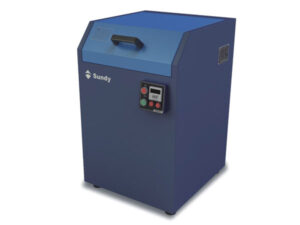
Application:
SDPP Pulverizer is designed to grind hard material to analytical size. It can be used in power industry, coal, fuel & chemical processing, metallurgical industry, building material, and g
Easy pressing, placing of mortar, fast pulverizing speed.
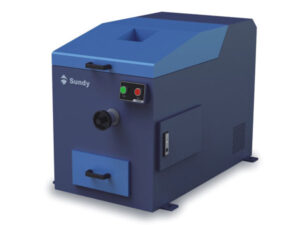
Application:
SDRC Roller Crusher is designed to intermittently or continuously crush hard mineral and other solid bulk material into analytical size in power industry, coal, chemical processing, meta
Low noise, no sample splashing.
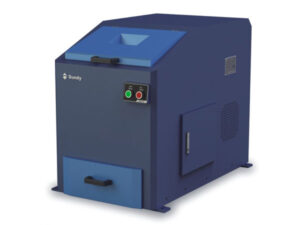
Application:
SDJC Jaw Crusher is designed to intermittently or continuously crush medium hard mineral and other solid bulk material into analytical size in power industry, coal, chemical processing, m
Convenient Feeding, high productivity, low noise.
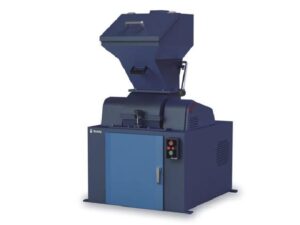
Application:
SDHC Hammer Crusher is designed to continuously crush hard material into analytical size. It is widely used in power industry, coal, chemical processing, metallurgical industry, engineeri
No mixing, high representativeness.
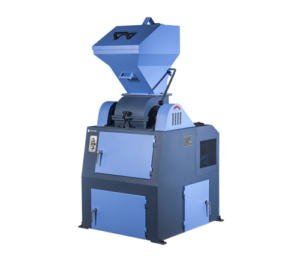
Application:
SDHD Hammer Crusher & Divider can be used to crush sample into testing or analytical size. It is widely applied in power industry, coal industry, chemical processing, metallurgical
Easy sample feeding.
Multi sample discarding methods.
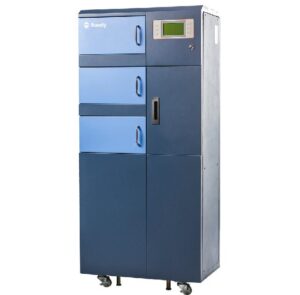
Application:
It is applied for quick drying and dehumidification of coal sample before sample pulverizing in the field of coal mining, power plant, metallurgy, chemical, solid waste etc. Standardize sample preparation operation ,reduce dust pollution.
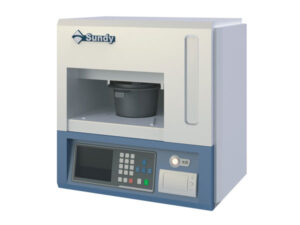 Application:
Application:
This instrument can be used to determine grindability of coal in the field of coal industry, power plants, metallurgical industry and scientific research, etc.
High automation
With film key and LCD screen
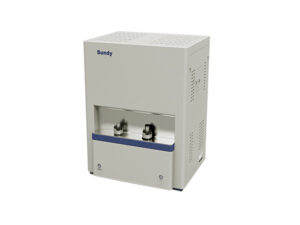
Application:
SDAF1200b Ash Fusion Tester can be used to determine the ash fusibility of coal and coke ash, biomass ash, solid wastes ash. It is widely used in power plant, coal industry, metallurgical industry, petrochemical industry, environmental protection, cement industry, paper manufacturing, geological exploration, and institutes.
Dimensions: 550mm*850mm*843mm
Weight:108kg
Models Available
SDAF1600b Ash Fusion Tester
SDAF1200b Ash Fusion Tester
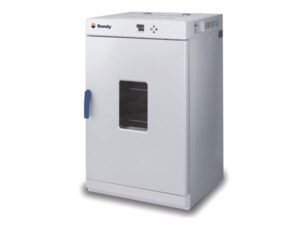
Application:
The Drying Oven can be used to determine moisture content in coal, coke and solid biomass fuel and is applicable to drying, baking, wax melting and heat treatment in laboratory.
Fast temperature rise, accurate temperature control and stable operation.
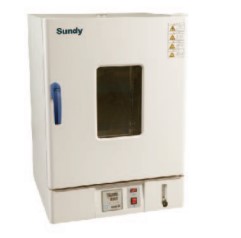
Application
SDDH315t Nitrogen/Air Drying Oven can be used to determine moisture content in coal, coke and in soli biomass fuel and is applicable to drying baking, wax melting and heat treatment in laboratory

Application:
SDMF300 Muffle Furnace can be used to determine ash and volatile content in coal, coke and other solid biomass fuels etc.
SDMF300 Muffle Furnace High precision temperature control.
Stable operation Real time temperature curve
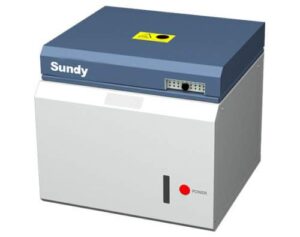
Application
SDTGA500 can be used to determine total moisture and air dried basis moisture in coal, coke, solid wastes and biomass fuel.
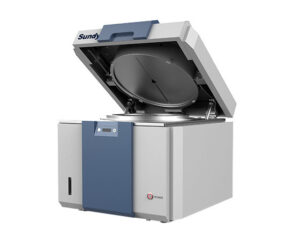
Application
SDLOI2000 Loss on Ignition analyzer can be used to determine the lose on ignition and moisture in the sample of cement, aluminum oxide, iron ore, laterite nickel ore, limestone, dolomite, etc.
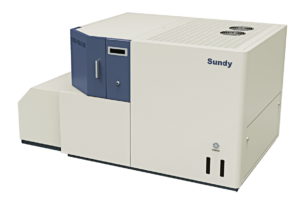
Application:

Application:
SDTGA6000A can be used to determine the moisture, ash ,volatile matter, LOI (Loss on Ignition) as well as calculation of fixed carbon and calorific value in coal, coke, calcined petrol coke and other solid biomass fuel. It can also be used for the calculation of carbon content in fly ash and clinker
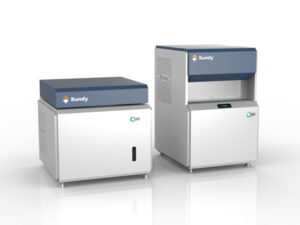
Application:
SDTGA6000 can be used to determine the moisture, ash and volatile matter as well as calculation of fixed carbon and calorific value in coal, coke, calcined petrol coke and other solid biomass fuel.
Dual Furnaces,stable performance, accurate test result.
19 samples+1 blank sample for moisture & ash; 25 samples+1 blank sample for volatile matter
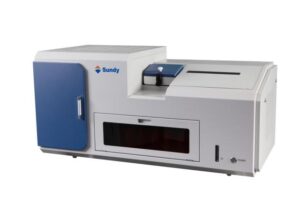
Application:
Fluorine and chlorine analyzer can be used to determine the fluorine and chlorine content in coal and other combustible materials.

Application:
SDS-V Coulomb Sulfur Analyzer can be used to determine the total sulfur content in combustibles such as coal, coke, petroleum and other solid biomass fuels in the field of power plant, coal mining, cement & steel company, environmental industry.
Test reliable, cost-effective.
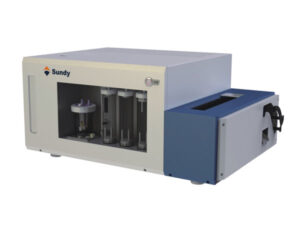
Application:
SDS720 can be used to determine the total sulfur content in combustibles such as coal, coke, petroleum and other solid biomass fuels in the field of power plant, coal mining, cement & steel company, environmental industry.
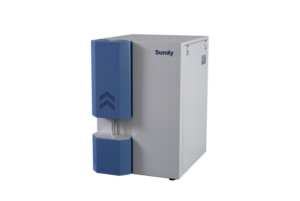
Application
It is suitable for the determination of carbon and sulfur content in ferrous metals, non-ferrous metals, alloy steel and others.

Application:
Sundy SDICS450 Infrared Carbon and Sulfur Analyzer can be used to determine the carbon and sulfur content in coal, coke, ash, biomass fuels and other combustibles in fields of power plants, coal mines, paper plants, metallurgy, petrochemical, steel factory etc.
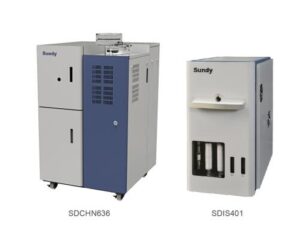
Application:
Sundy SDCHN636 Carbon Hydrogen Nitrogen & Sulfur Analyzer can be used to determine the carbon, hydrogen nitrogen and sulfur content in coal,coke,food,solid wastes,soil,fertilizer,etc in the fields of power plant, coal mine,metallurgy,petrochemical industry,steel factory environmental industry and so on.
Stackable auto loader, 36 samples per layer, 2 layers with 72 samples available
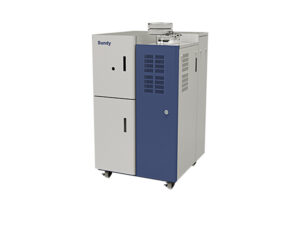
Application:
Sundy SDCHN636 Carbon Hydrogen & Nitrogen Analyzer can be used to determine the carbon, hydrogen and nitrogen content in coal,coke,food,solid wastes,soil,fertilizer,etc in the fields of power plant, coal mine,metallurgy,petrochemical industry,steel factory environmental industry and so on.
Stackable auto loader, 36 samples per layer, 2 layers with 72 samples available
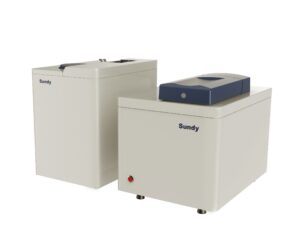
SDACM3200 can be used to determine the calorific value of solid and liquid combustibles such as coal, coke, petroleum oil, cement black meal, biomass fuels as well as building material.
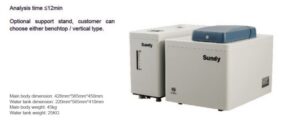
APPLICATION
SDAC1000 can be used to determine calorific value of solid and liquid combustibles such as coal, coke, petroleum oil, cement clack meal, biomass fuel as well as building material
 APPLICATION
APPLICATION
SDAC1200 can be used to determine calorific value of solid and liquid combustibles such as coal, coke, petroleum oil, cement clack meal, biomass fuel as well as building material
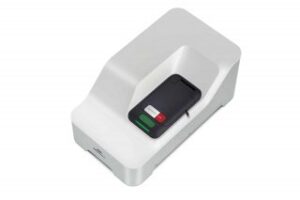 Our entry-level Zetasizer does not compromise on features. The Zetasizer Lab incorporates Adaptive Correlation, M3-PALS and constant current zeta mode. The Zetasizer Lab also ships with ZS Xplorer, easy-to-use analytical software. ZS Xplorer offers instant feedback on data quality, and guidance on how to improve your results.
Our entry-level Zetasizer does not compromise on features. The Zetasizer Lab incorporates Adaptive Correlation, M3-PALS and constant current zeta mode. The Zetasizer Lab also ships with ZS Xplorer, easy-to-use analytical software. ZS Xplorer offers instant feedback on data quality, and guidance on how to improve your results.
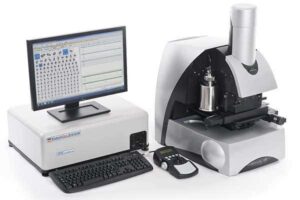 The Morphologi G3-ID provides a unique capability, combining automated static imaging features of the Morphologi G3 with chemical identification of individual particles using Raman spectroscopy to enable the measurement of component specific particle size and particle shape distributions.
The Morphologi G3-ID provides a unique capability, combining automated static imaging features of the Morphologi G3 with chemical identification of individual particles using Raman spectroscopy to enable the measurement of component specific particle size and particle shape distributions.
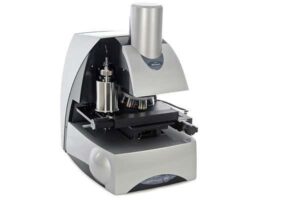 The Morphologi G3 provides an advanced yet easy to use particle characterization tool for the measurement of particle size and particle shape from 0.5 microns to several millimeters. In one instrument it offers the flexibility required for R&D and troubleshooting applications, and user-independent results and the validation required for automated QC analysis. The technique is often used in conjunction with laser diffraction particle sizing, to gain a deeper understanding of product or process behavior.
The Morphologi G3 provides an advanced yet easy to use particle characterization tool for the measurement of particle size and particle shape from 0.5 microns to several millimeters. In one instrument it offers the flexibility required for R&D and troubleshooting applications, and user-independent results and the validation required for automated QC analysis. The technique is often used in conjunction with laser diffraction particle sizing, to gain a deeper understanding of product or process behavior.
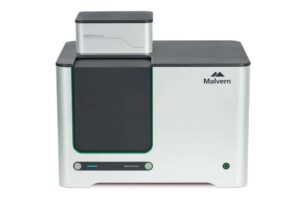
Morphologi 4 provides detailed morphological descriptions of particulate samples through static image analysis, enabling a greater understanding of both sample and process. It can equally be used as an R&D tool to investigate challenging applications and in automated QC analysis where generation of robust, user-independent results and validation are required.
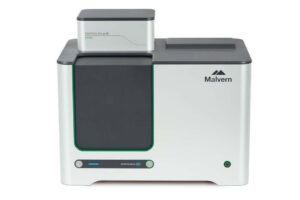 Morphologi 4-ID delivers detailed component-specific morphological descriptions of particulate blends through Morphologically-Directed Raman Spectroscopy (MDRS). This combines automated particle imaging with Raman spectroscopy in a single, integrated platform, providing the power to unlock complex particle characterization problems. Morphologi 4-ID software works seamlessly with Wiley’s KnowItAll® Raman Identification Pro software platform to provide rapid identification of your Raman spectra.
Morphologi 4-ID delivers detailed component-specific morphological descriptions of particulate blends through Morphologically-Directed Raman Spectroscopy (MDRS). This combines automated particle imaging with Raman spectroscopy in a single, integrated platform, providing the power to unlock complex particle characterization problems. Morphologi 4-ID software works seamlessly with Wiley’s KnowItAll® Raman Identification Pro software platform to provide rapid identification of your Raman spectra.
 The Malvern Panalytical NanoSight NS300 Instrument provides an easy-to-use, reproducible platform for nanoparticle characterization.
The Malvern Panalytical NanoSight NS300 Instrument provides an easy-to-use, reproducible platform for nanoparticle characterization.
The NS300 allows rapid analysis of the size distribution and concentration of all types of nanoparticles from 0.01 – 1 µm* in diameter, depending on the instrument configuration and sample type.
With the ability to be supplied with interchangeable laser modules and the introduction of a motorized filter wheel means different fluorescent labels can be analyzed. Sample temperature is fully programmable through the Nanoparticle Tracking Analysis (NTA) software.
*sample and system configuration dependent
 The new Zetasizer Ultra is the most advanced system for the measurement of particle and molecular size, particle charge and particle concentration, and represents the most intelligent and flexible instrument in the Zetasizer Advance range.
The new Zetasizer Ultra is the most advanced system for the measurement of particle and molecular size, particle charge and particle concentration, and represents the most intelligent and flexible instrument in the Zetasizer Advance range.
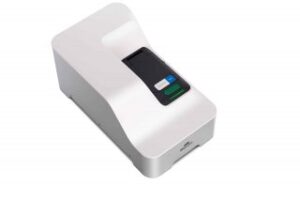
The new Zetasizer Pro is your go-to instrument to measure a wide range of sample types and concentrations. It offers wide dynamic concentration capability and high sensitivity due to the Non-Invasive Back Scatter (NIBS) optical design. Measurement of particle size, molecular size, electrophoretic mobility, zeta potential and molecular weight can all be performed with ease.
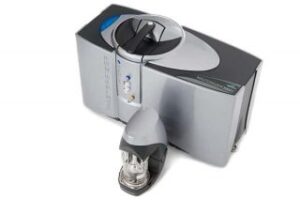
Our entry level particle sizing system which can be upgraded as required.
0.01µm – 1000µm
Standard particle size range
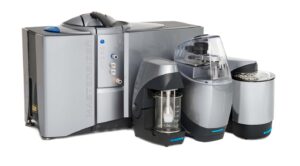
Class-leading particle sizing performance that generates the robust, reliable data you need.
0.01µm – 3500µm
Extended particle size range
